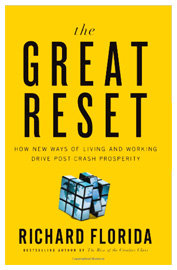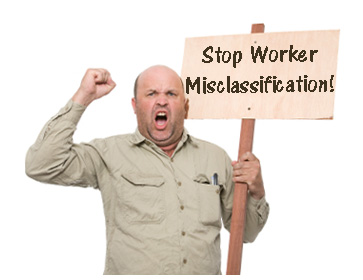The Great Reset
 For anyone wondering who hit the reset button on the economy and also wondering just exactly what is going on, I recommend that you order a copy of The Great Reset: How New Ways of Living and Working Drive Post-Crash Prosperity written by Richard Florida, the author of The Rise of the Creative Class: And How It's Transforming Work, Leisure, Community and Everyday Life and Who's Your City?: How the Creative Economy Is Making Where to Live the Most Important Decision of Your Life about the nature of particular cities and their economic development.
For anyone wondering who hit the reset button on the economy and also wondering just exactly what is going on, I recommend that you order a copy of The Great Reset: How New Ways of Living and Working Drive Post-Crash Prosperity written by Richard Florida, the author of The Rise of the Creative Class: And How It's Transforming Work, Leisure, Community and Everyday Life and Who's Your City?: How the Creative Economy Is Making Where to Live the Most Important Decision of Your Life about the nature of particular cities and their economic development.
For the reader interested in the construction industry, The Great Reset looks at the three epochal economic upheavals in the US economy – the Great Crash of 1873, the Great Depression of 1929 and the Great Recession of 2008 that we currently see around us everyday. He describes the construction and growth of the major cities, the economic drivers of those cities and how they were changed by massive job and industry losses during the economic shifts.


 With the advent of the Arizona Immigration law, SB 1070, the filing of Amicus Briefs by 27 states, and the challenge to the Arizona law, many of us are not watching the Wage Theft and Employee Misclassification movement underway in a large number of states.
With the advent of the Arizona Immigration law, SB 1070, the filing of Amicus Briefs by 27 states, and the challenge to the Arizona law, many of us are not watching the Wage Theft and Employee Misclassification movement underway in a large number of states. SB 1070, the Arizona immigration bill passed and is in force, almost. The US Department of Justice filed suit and won a restraining order to stop certain parts of the bill. Last week, Judge Sharon Bolton ruled that some things like mandatory questioning about immigration status were not legal under the Federal law. She did not go so far as to say that they could not question a person’s status and so there will be a de facto immigration bill in effect. The State of Arizona and Governor Brewer are filing an appeal with the 9th circuit and
SB 1070, the Arizona immigration bill passed and is in force, almost. The US Department of Justice filed suit and won a restraining order to stop certain parts of the bill. Last week, Judge Sharon Bolton ruled that some things like mandatory questioning about immigration status were not legal under the Federal law. She did not go so far as to say that they could not question a person’s status and so there will be a de facto immigration bill in effect. The State of Arizona and Governor Brewer are filing an appeal with the 9th circuit and  The BP oil spill has taken a positive turn in the Gulf and the next issue for the major news media and all of the bloggers will be the happenings in Arizona. The Arizona Immigration law goes into effect tomorrow and all of the rhetoric, rallies, protests, Presidential intervention and Judges orders will come to a head. The construction industry is but one part of the economy in Arizona that will be impacted.
The BP oil spill has taken a positive turn in the Gulf and the next issue for the major news media and all of the bloggers will be the happenings in Arizona. The Arizona Immigration law goes into effect tomorrow and all of the rhetoric, rallies, protests, Presidential intervention and Judges orders will come to a head. The construction industry is but one part of the economy in Arizona that will be impacted. We made mention of this subject in an earlier blog post and we have seen several other discussions that talk about the pros and cons of Integrated Project Delivery (IPD) as part of the LEAN movement. The publication of one particularly relevant
We made mention of this subject in an earlier blog post and we have seen several other discussions that talk about the pros and cons of Integrated Project Delivery (IPD) as part of the LEAN movement. The publication of one particularly relevant  Construction company owners listen up. According to an article in Finance Review, the IRS is undertaking 6,000 additional random audits over the next 3 years in order to recoup part of the $14 billion that they estimate owners in a wide variety of industries like construction have underpaid on their taxes by misclassifying their employees as independent contractors. Even though they say that the audits will be random, you can bet that they will concentrate on those business where the workforce is filled with “independent contractors” in order to avoid the tax and benefits burden.
Construction company owners listen up. According to an article in Finance Review, the IRS is undertaking 6,000 additional random audits over the next 3 years in order to recoup part of the $14 billion that they estimate owners in a wide variety of industries like construction have underpaid on their taxes by misclassifying their employees as independent contractors. Even though they say that the audits will be random, you can bet that they will concentrate on those business where the workforce is filled with “independent contractors” in order to avoid the tax and benefits burden. We recently attended the annual update meeting staged by
We recently attended the annual update meeting staged by  Last year a survey of over 4,000 low-wage workers in New York, Chicago and Los Angeles was released in the report,
Last year a survey of over 4,000 low-wage workers in New York, Chicago and Los Angeles was released in the report,  Mike Salsgiver, executive director of the Oregon-Columbia chapter of the Associated General Contractors of America (AGC), recently wrote an interesting
Mike Salsgiver, executive director of the Oregon-Columbia chapter of the Associated General Contractors of America (AGC), recently wrote an interesting  "The number of independent contractors in the total employed workforce grew from 6.7 percent in 1995 to 7.4 percent in 2005. In 2005, there were 10.3 million independent contractors. Independent contractors, in 2005, had an average age of 46 years, were almost twice as likely to be male than female, and almost two-thirds had some college or higher education. Independent contractors were employed in a wide range of industries (such as professional services and construction) and occupations (including sales and management)."
"The number of independent contractors in the total employed workforce grew from 6.7 percent in 1995 to 7.4 percent in 2005. In 2005, there were 10.3 million independent contractors. Independent contractors, in 2005, had an average age of 46 years, were almost twice as likely to be male than female, and almost two-thirds had some college or higher education. Independent contractors were employed in a wide range of industries (such as professional services and construction) and occupations (including sales and management)."